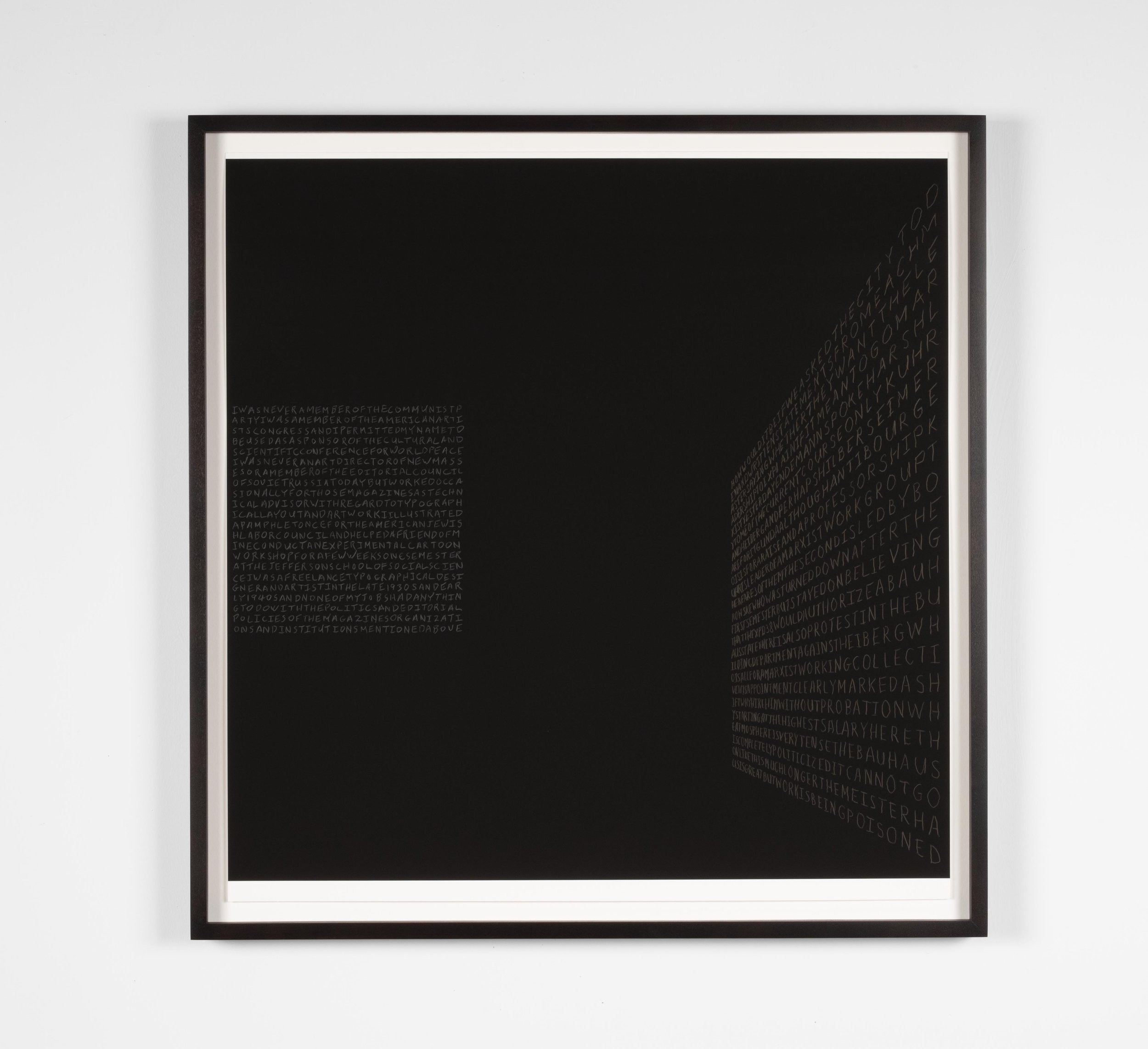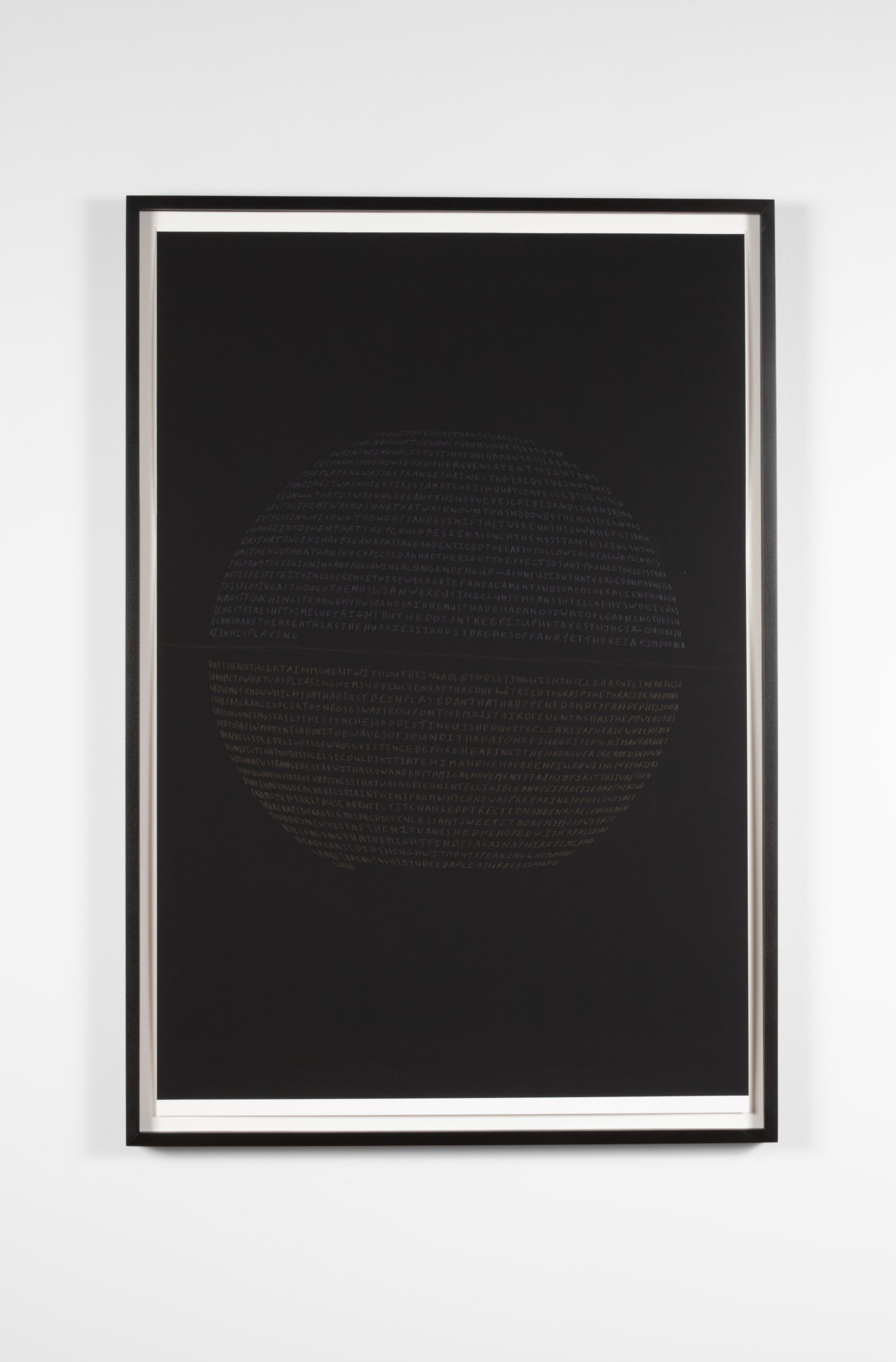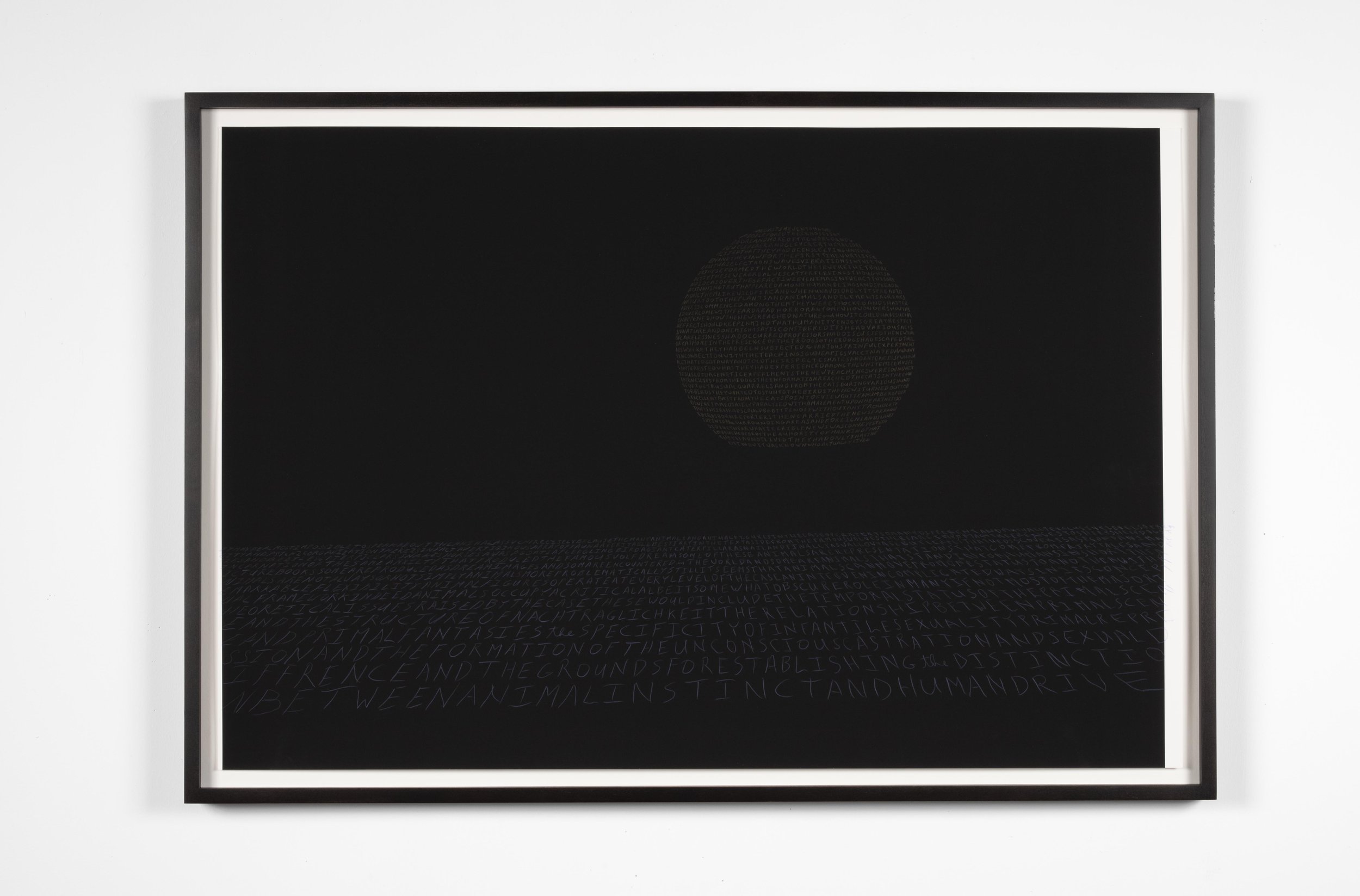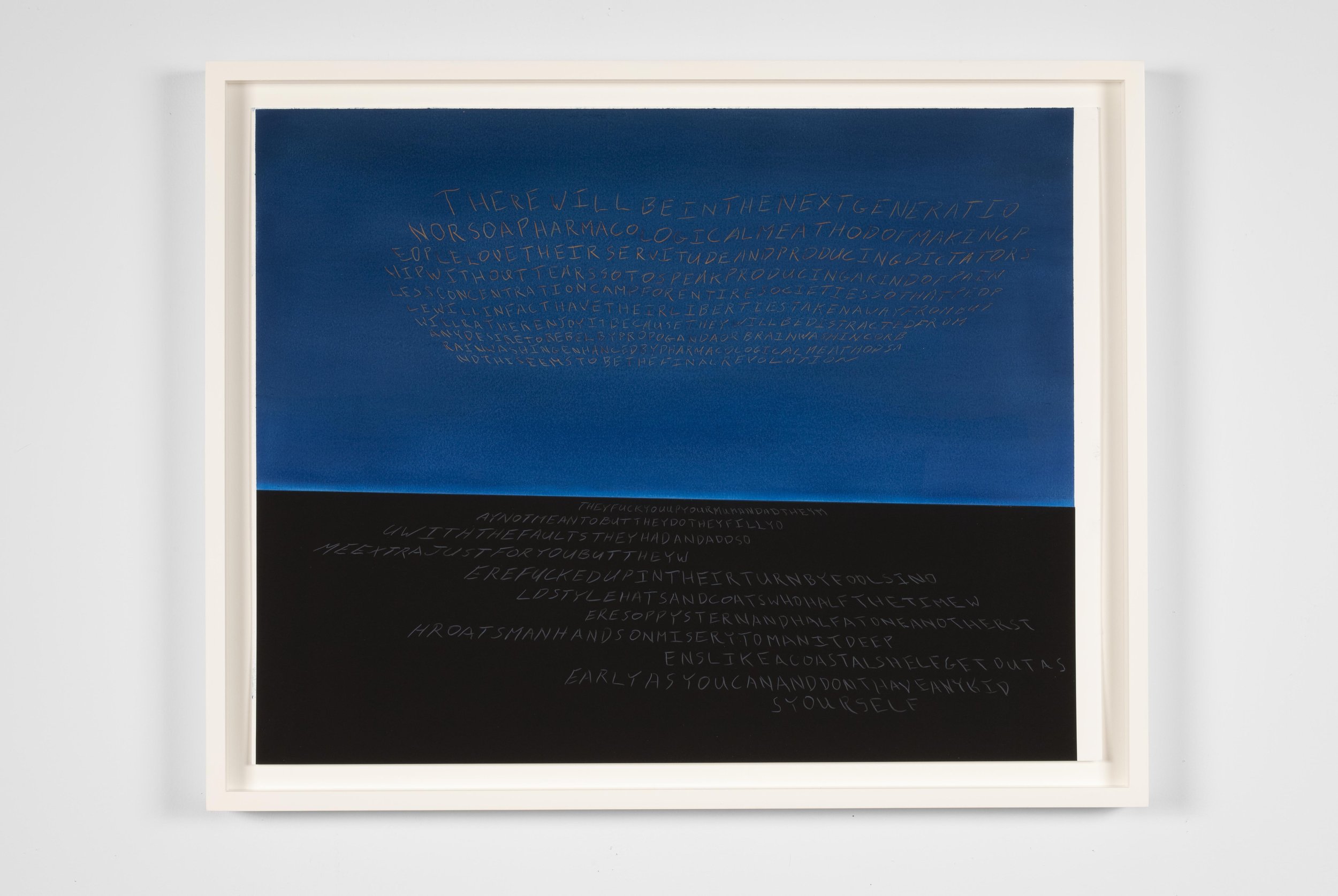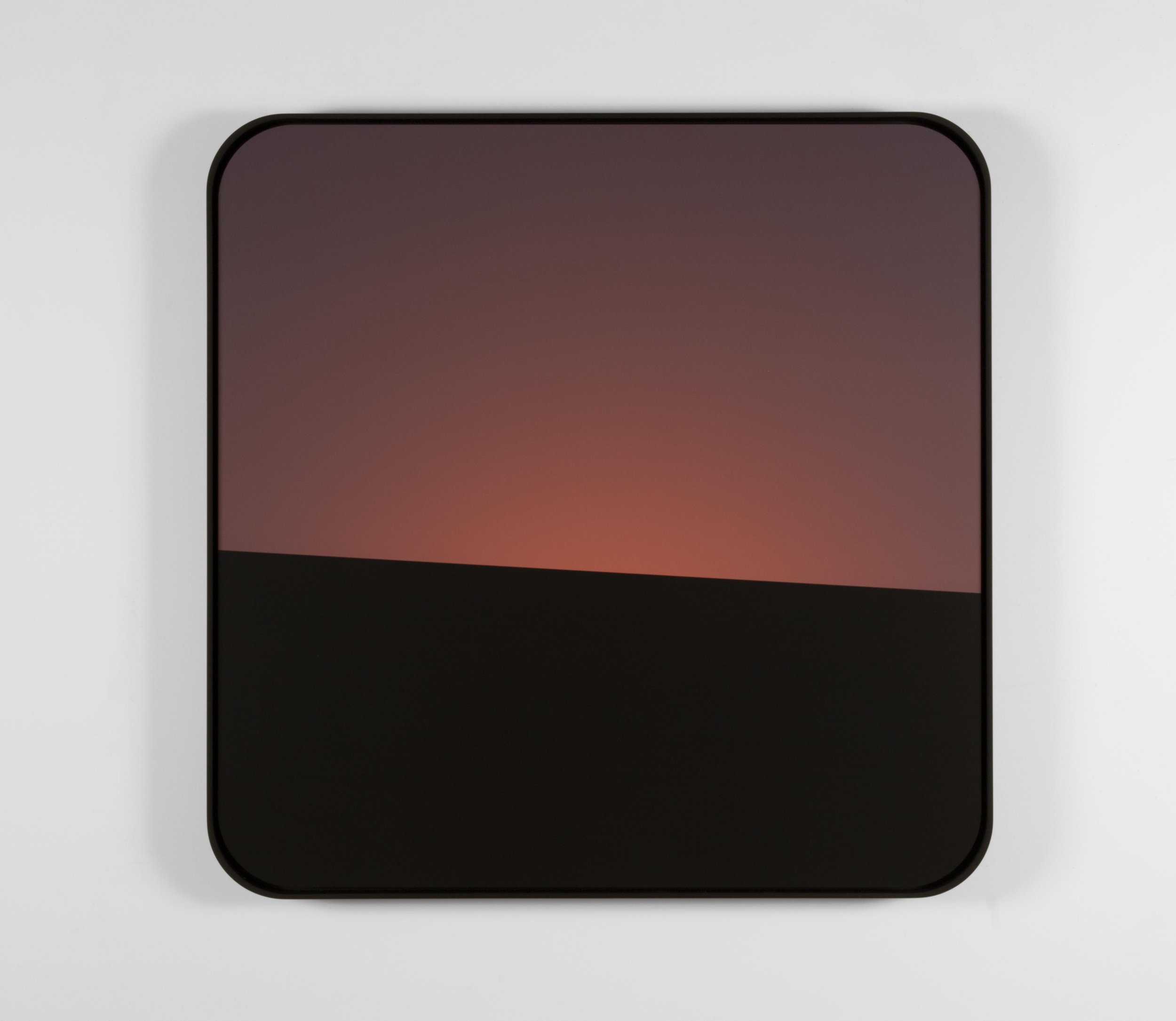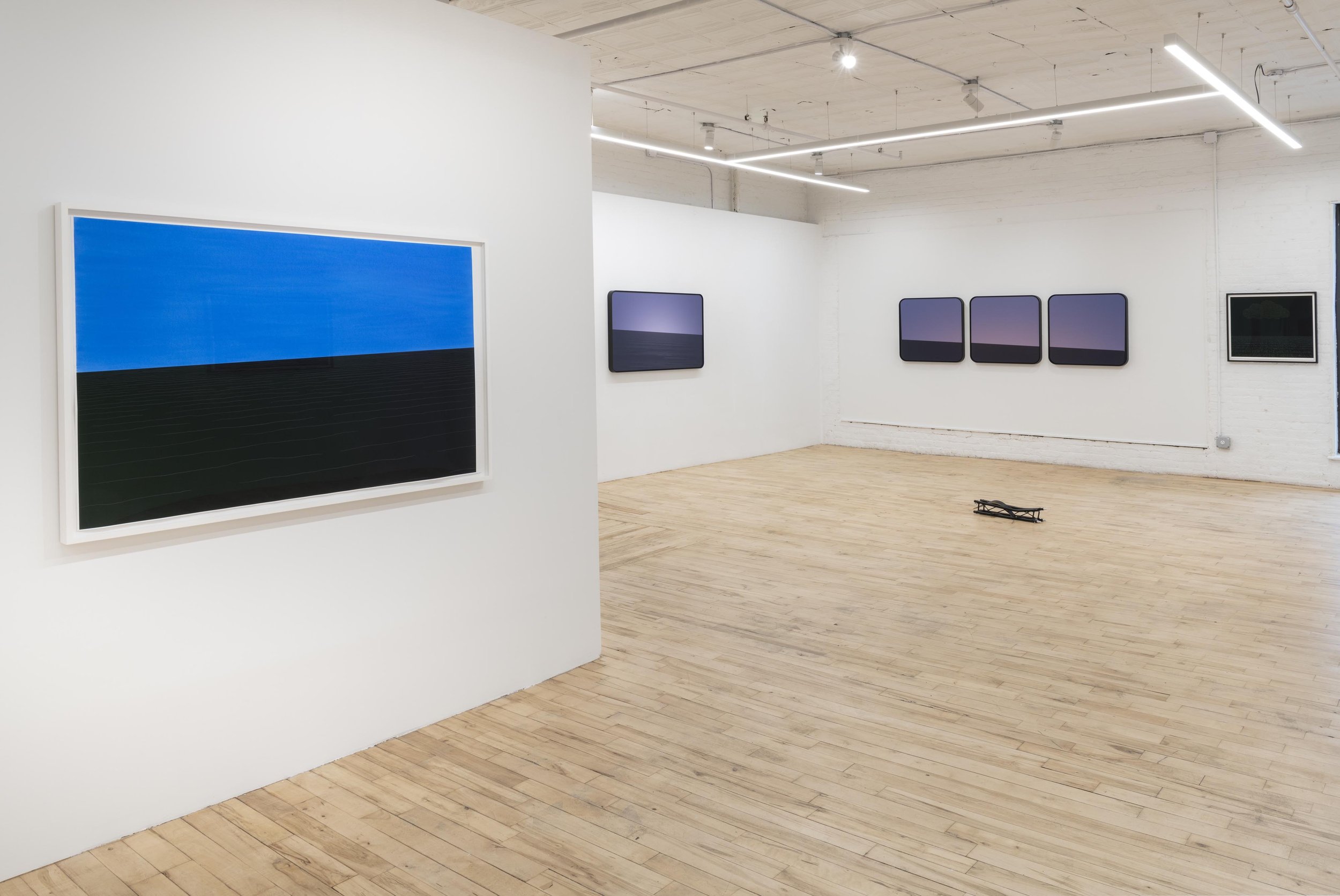CRAIG KALPAKJIAN
Even a small boat typically casts a wide debris field
March 30 - May 6, 2023
Opening Reception Thursday, March 30, 6-8pm
Craig Kalpakjian
Natural Beauty G7Twu2&hgpJ*14, 2023
UV pigment over pencil on dibond with artist frame
61 x 61 in.
Craig Kalpakjian’s work unsettles the infrastructures that surreptitiously organize our experience and scaffold our perception. He incisively renders the violent banality of contemporary life visible—forging a diagonal from the cop’s nightstick to linear perspective. His tactics are never wholly transparent but develop through a carefully elaborated language of abstraction that makes use of trusses, plants, robots, and surveillance equipment. For the past thirty years, he has multiplied the definitions of abstraction to encompass an array of alienating realms: bridging the antiseptic emptiness of virtual environments with the flattened geometries of modernism in a crossbreed of J.G. Ballard and Josef Albers. Making some of the earliest artworks to critically take on digital modeling by blurring the line between actualization and simulation, Kalpakjian’s models and devices always have real effects.
Kalpakjian’s new work shifts his focus to the compositional convention of the horizon line in warped scapes that dismantle any simple delineation of land, sea, sky, and ground. As in his earlier work with queue barriers or spotlights, the “exterior” devices that guide perception are folded into the work. The horizon’s exterior (the horizon of the horizon) is the framing mechanisms that lock the image in place, at eye-level, for the viewer. Kalpakjian skews and cants the frame to disrupt the usual depth cues and unground dimensional stability. These unstable abstractions elicit the wavering of parallax dimensions described in Edwin Abbott’s 1884 fantasy novel Flatland, where three-dimensional objects are flattened onto two-dimensional planes, and to speak of ulterior dimensions is a criminal act.
Kalpakjian’s “renderings” of virtual space are captured in off-center perspectives, yet a semblance of picturesque serenity eerily remains. The final images, machine painted in UV-pigment on dibond with pencil drawn beneath, look naturalistic at first glance but on closer inspection, the oceans appear to be dark hard-edged planes, and the skies seem to be flat luminous gradients. The frames resemble those of hermetically sealed windows: looking onto a world that is not quite exterior. This chilling viewpoint encapsulates the closed-open circuitry of Kalpakjian’s work, which pushes systems beyond their limit till they degenerate into chaotic feedback loops, infinite regress, or slow death.
For a body of work conspicuously emptied of figures, it’s important to realize the way Kalpakjian uncannily recapitulates the open-closed boundaries of the body without lapsing into the oceanic sublime of redemptive dissolution. For Freud, the oceanic experience was the confusion of a memory trace of porousness with a fantasy of protection. What of a plastic ocean that precedes and exceeds our desires for meaning, union, and vitality?
Kalpakjian’s word-scapes are similarly composed but stripped of luminescence and faintly drawn, appearing almost as photographic negatives or muted impressions of the original printed texts. Each work includes two handwritten passages in shapes that advance and recede into an abyss of starkly printed ink. Encrusted messages from Josef Albers, Alfred Döblin, Aldous Huxley, Franz Kafka, Philip Larkin, Elissa Marder, Marcel Proust, Ad Reinhardt, and Adalbert Stifter reflect Kalpakjian’s long-standing interest in the political consequences of modernism. An excerpt from The Trial is inscribed in colored pencil across an oceanic plane while a cloud-shaped text floating above describes the ego as a political organization (a quotation from Marder). The danger of the top-down modeling of society is apparent from the Huxley quote, which warns against a “dictatorship without tears,” produced through a pharmacology of enjoyment, inverting the more commonly imagined Orwellian disciplinary dystopia. Perhaps the algorithm is the ultimate incarnation of tear-free control which continuously resets the horizon as we blink.
The psychic machinery of Kalpakjian’s work is illuminated by such textual passages, which suggest that the ego acts as a horizon line dividing the unconscious real from conscious reality by administering and enabling the retention of letters and traces. His small heaps of letters forge a kind of “debris field” (to quote Leslie Winer) of symbolic inscriptions. The letters are mapped onto a tight linear grid, itself derived from a virtual diagram. There’s an irresolvable push-pull between the surface of the letter and the depth of the image in a paradoxically precise amorphousness: legible but scarcely readable.
Kalpakjian’s framings often produce a dialectical tension between blocking and permitting flows of energy, whether through bulletproof glass or queue barriers. Are these bulletproof sunsets? This tension adamantly refuses both the permeable splendor of vitalism and the opaque obscurity of the avant-garde. Instead, Kalpakjian invents new frames and devices that display an elastic potential without ever disguising his main vehicle of seduction: an entropic force that pulls the spectator through a vanishing point.
-Felix Bernstein
Craig Kalpakjian has exhibited widely throughout the United States and Europe. Recent exhibitions include a solo presentation at Oreilles Internaxionales, Basel, Switzerland; From Disco to Disco at Greene Naftali Gallery, NY; The Sun Placed in The Abyss at the Columbus Museum of Art, OH; The Distance of the Moon at the Akron Art Museum, OH; Artists’ Choice: An Expanded Field of Photography at Mass MoCA, MA; Drone-the Automated Image in Montreal, ON, Canada; After Photoshop: Manipulated Photography in the Digital Age at the Metropolitan Museum of Art, NY; and The Evryali Score at David Zwirner Gallery, NY. This is his third solo exhibition at Kai Matsumiya gallery.
His work is included in the collections of The Museum of Modern Art, NY; The Whitney Museum of American Art, NY; The Metropolitan Museum of Art, NY; The San Francisco Museum of Modern Art, CA; the Centre Pompidou, Paris, FR; and has been featured in Blind Spot Magazine. He also regularly performs in the band Das Audit.
Drawing Texts Booklet
Press Release
Natural Beauty L=FT2.iw9DTL10, 2022
UV pigment on dibond, laser-cut Medex MDF, laquer finish; triptych (3 panels)
29 x 93 in. 73.66 x 236.22 cm
Natural Beauty ftbcFj>6D4b{13, 2023
UV pigment on dibond, satin black maple wood
36 x 43 in. 91.44 x 109.22 cm.
Natural Beauty d=74PDonLGZ;09, 2022
UV pigment on dibond, laser-cut Medex MDF, laquer finish
36 x 36 in. 91.44 x 91.44 cm.
Broken Prospect Sky 3, 2022
pastel and inkjet over color pencil on paper | (unique)
24 x 36 in. 60.96 x 91.44 cm
